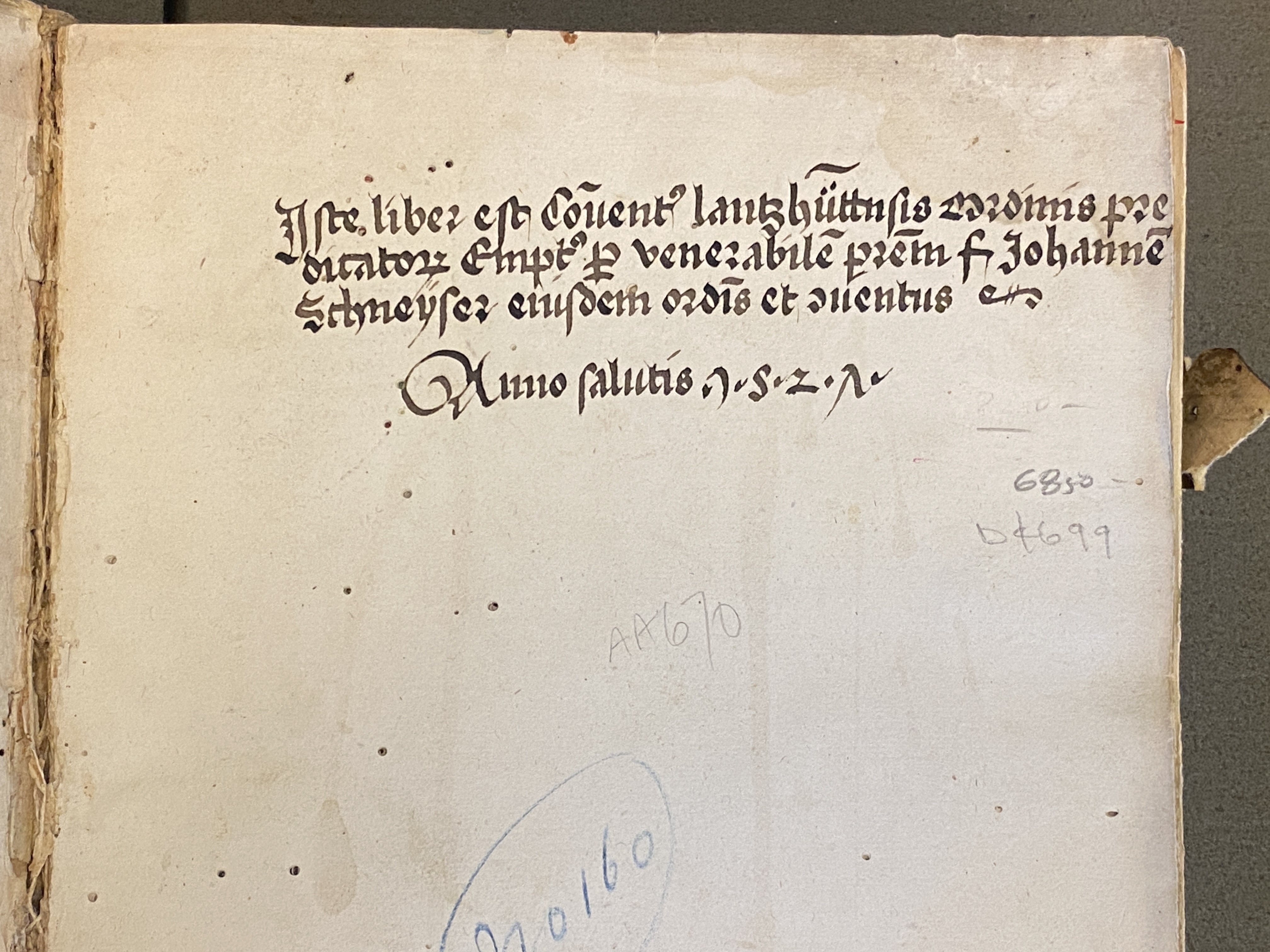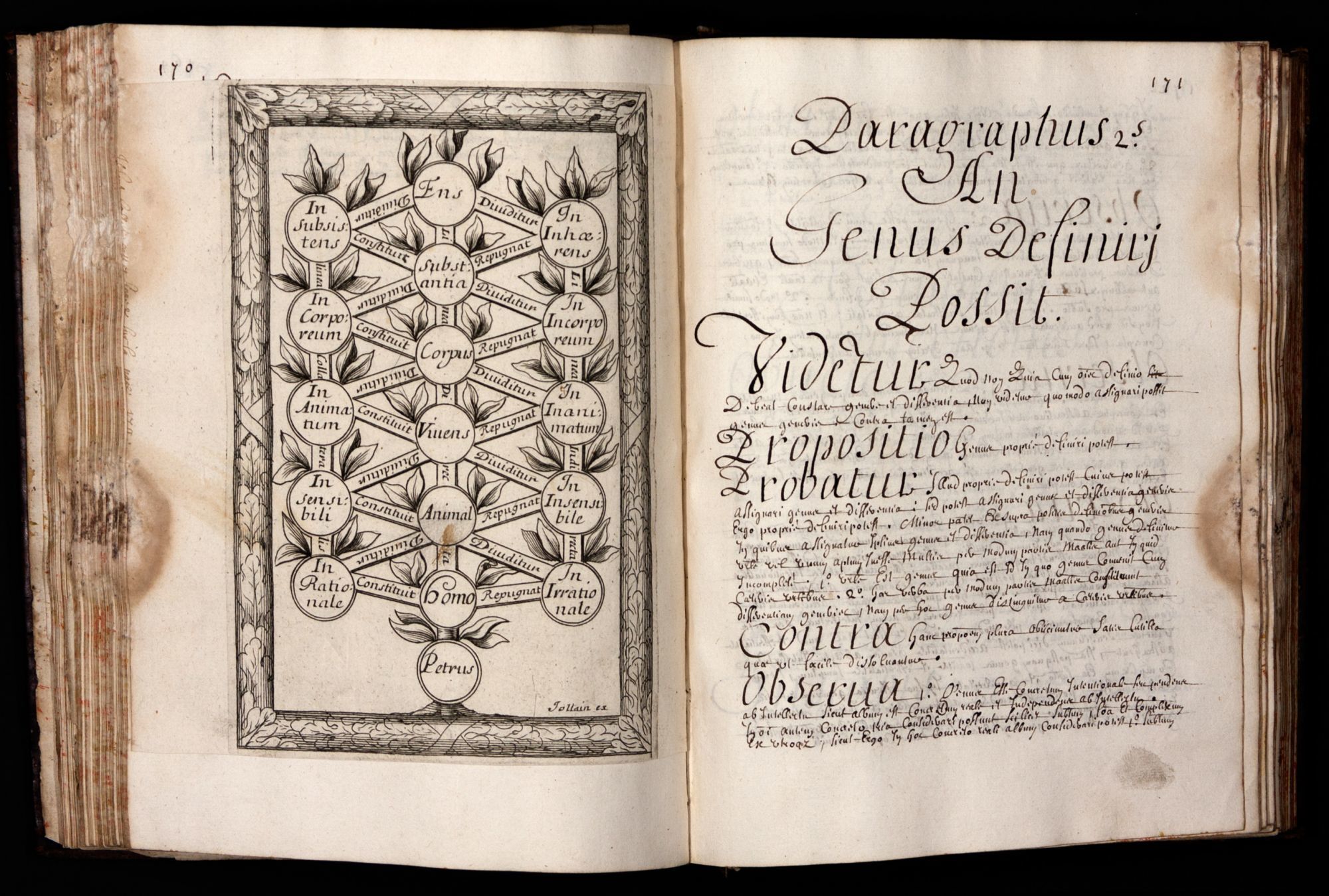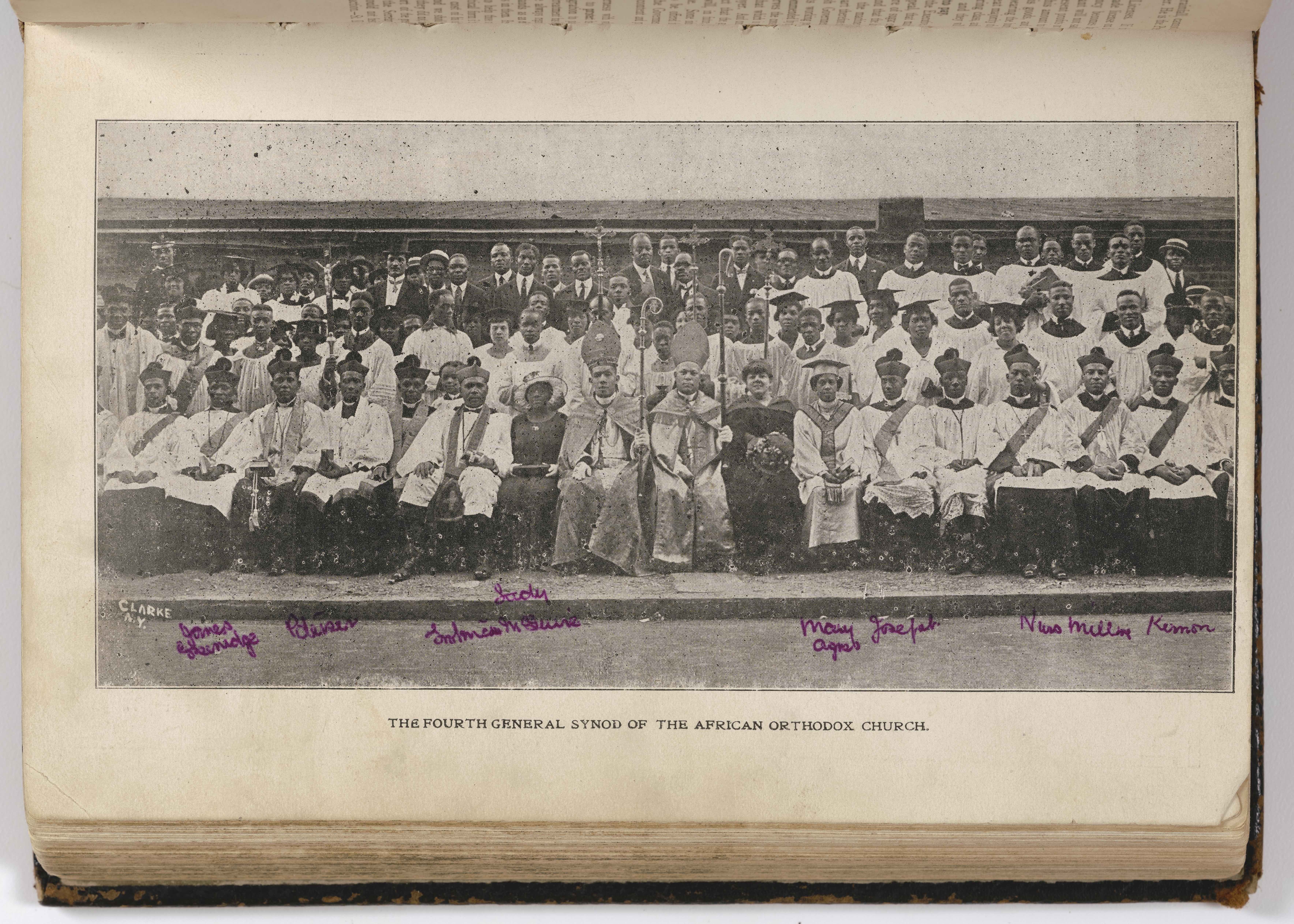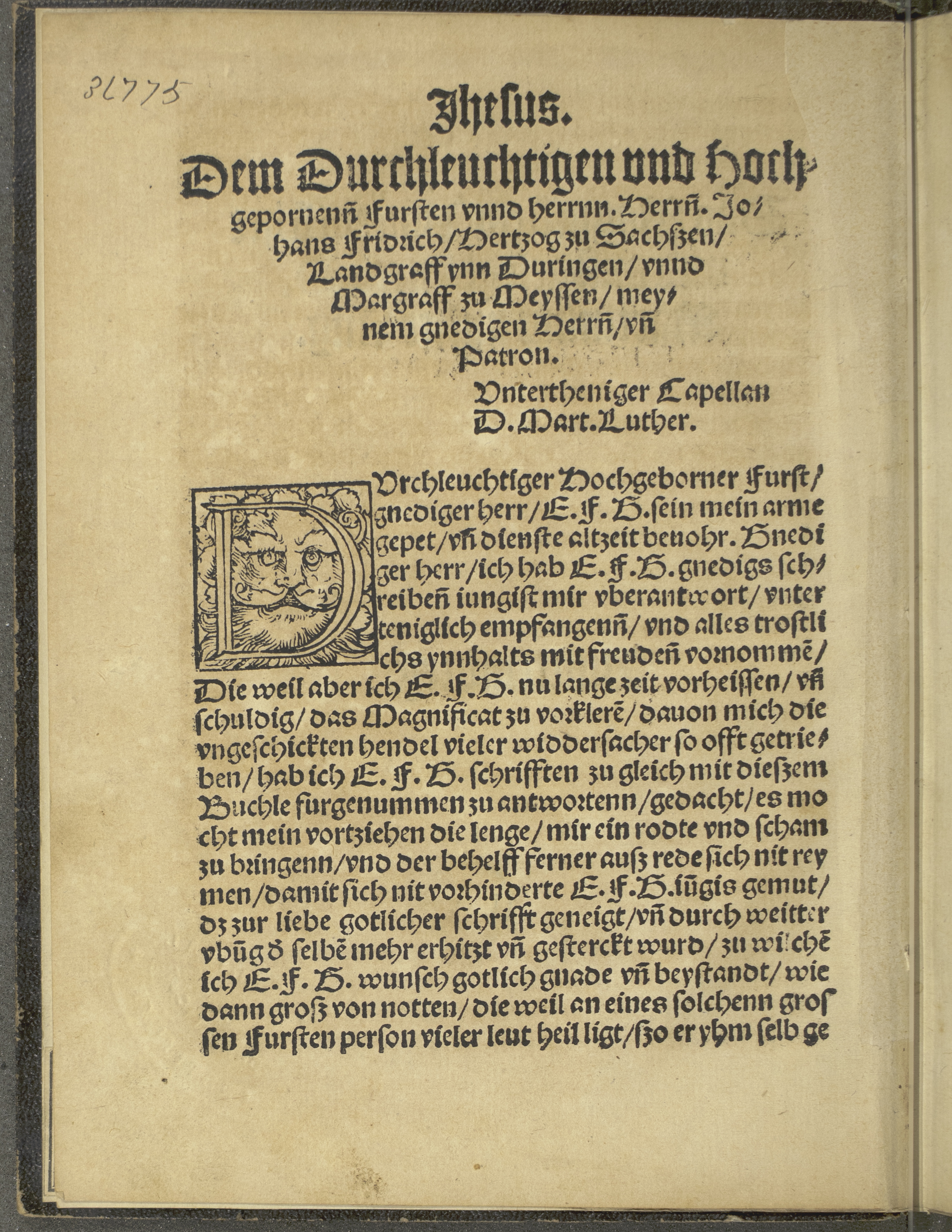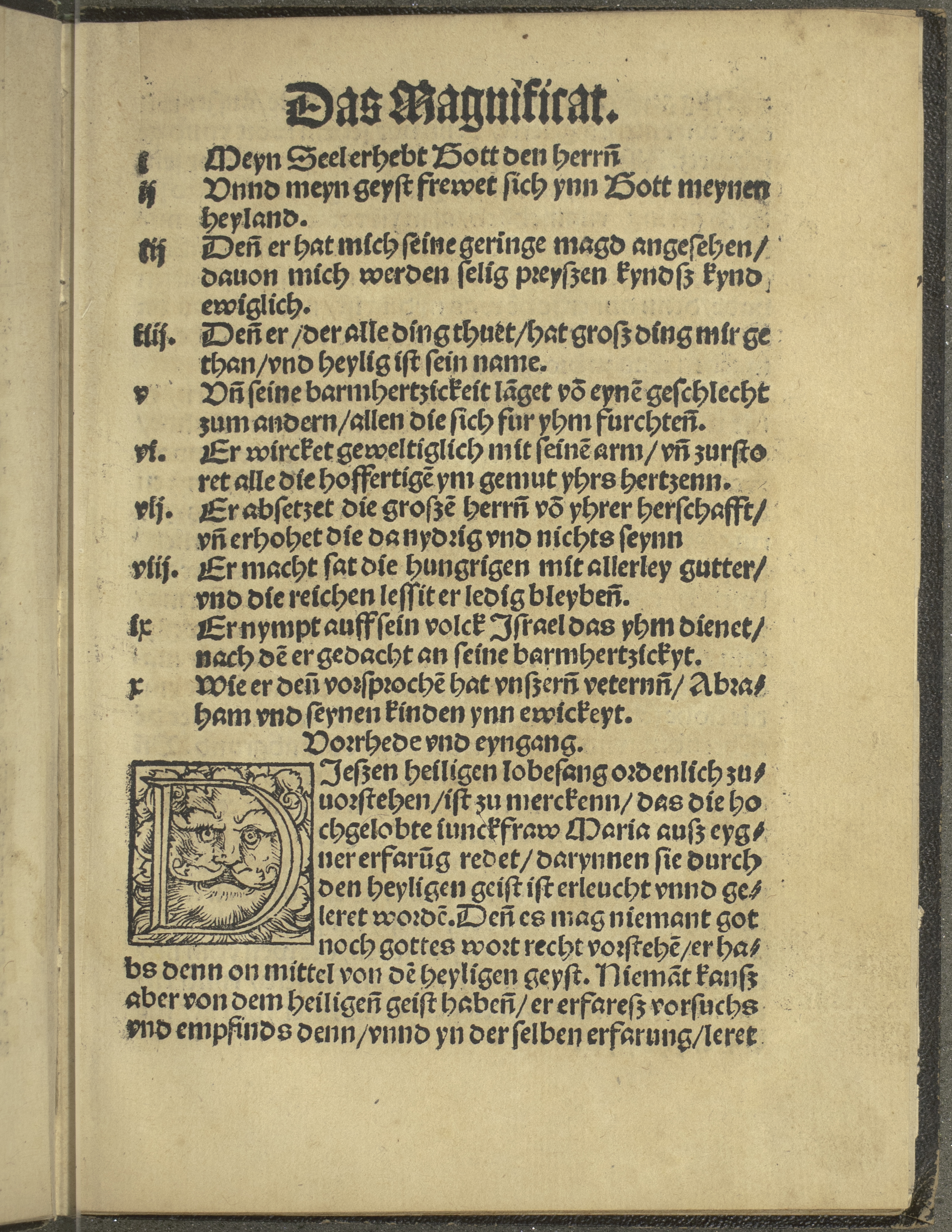Faculty Retirement Acquisitions


Theologia naturalis siue Liber creatura[rum] specialiter de homine [et] de natura eius in qua[n]tum homo. : [et] de his qu[a] sunt ei necessaria ad cognoscendu[m] seip[su]m [et] Deu[m] [et] om[n]e debitu[m] ad q[uo]d ho[mo] tenet[ur] et obligatur tam Deo
Summary: The Spanish scholar Raymond of Sabunde was professor of medicine, philosophy, and theology at the University of Toulouse during the early fifteenth century. His study of natural theology came under the scrutiny of the Council of Trent, which placed its prologue on the index. This particular copy has been censored: the prologue, (leaf A6) has been either inked out or cut away.Each year, Pitts Theology Library purchases a book or manuscript item to honor the contributions that retiring faculty members have made to the Candler School of Theology community. The acquisitions of these materials are intentional and relate to the faculty member's area of scholarship.
Retiring Faculty and Acquisitions for 2023

Timothy P. Jackson
Bishop Mack B. and Rose Stokes Professor of Theological Ethics
Acquisition: Saint Augustine of Hippo, Sermones Sancti Augustini de tempore (Basel: Johannes Amerbach, 1495). 1495 AUGU
Amongst Professor Tim Jackson’s many interests in scholarship and teaching, dominant is his exploration of political virtue, and in particular his sustained argument for love as a primary Christian virtue in interactions with others. Central to that work has been his wrestling with the figure of Saint Augustine (345-43) and, perhaps more often, the long line of interpreters of Saint Augustine. Dr. Jackson writes in his 2015 Eerdmans book, Political Agape: “Of all the theologians who put love at the core of their political thinking, none is more influential than Saint Augustine. . . .Yet, in my judgment, no theologian has caused more error and suffering that the bishop of Hippo” (3). In a world that needs a little love and virtue injected into its politics, we can all appreciate Dr. Jackson’s wrestling with Augustine and his attempts to soften the sharp line often dividing the things of God and the things of man.
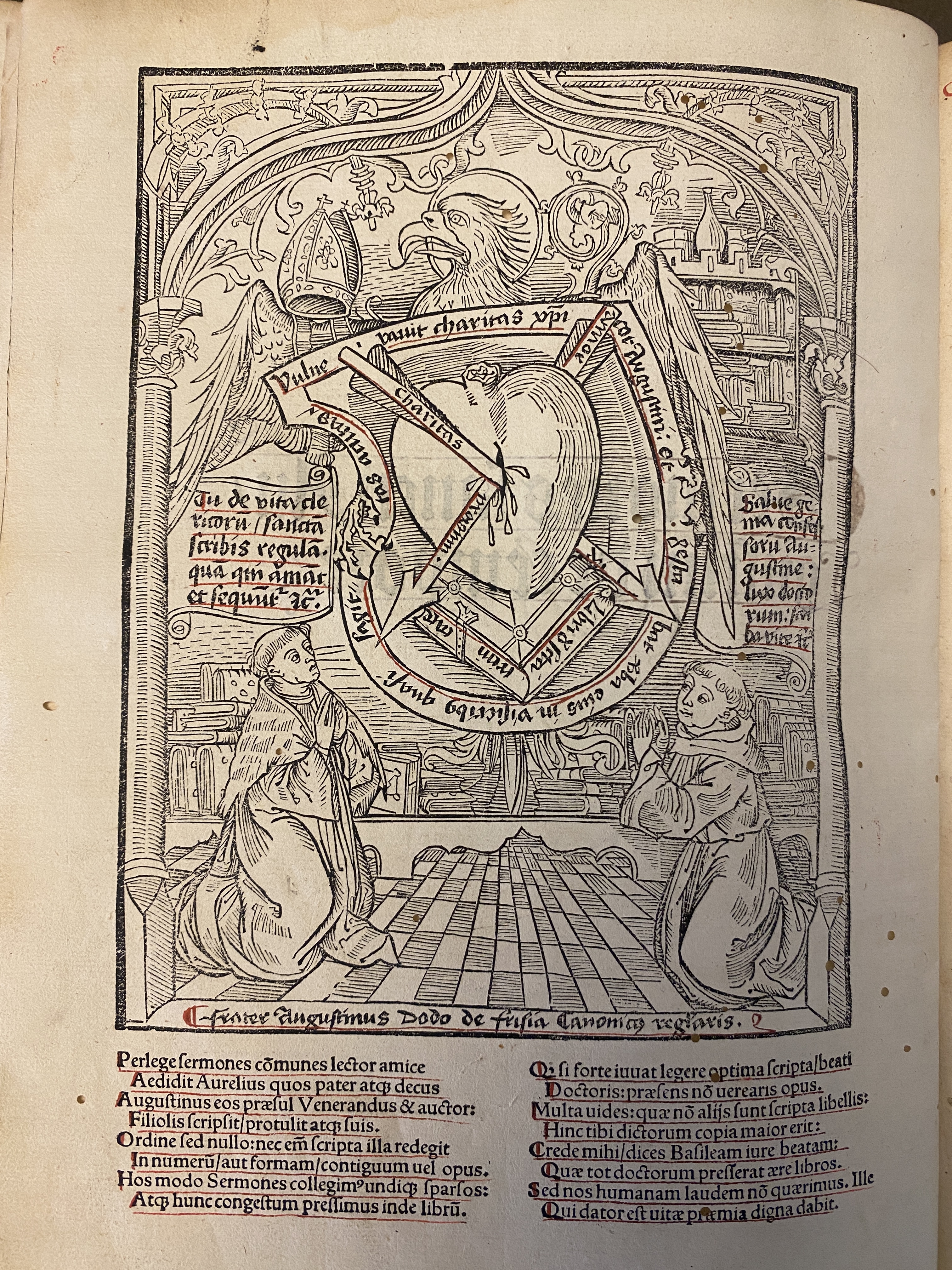 Given this consistent theme in Dr. Jackson’s work, it seemed altogether fitting that Pitts add a major volume of Saint Augustine to encourage Dr. Jackson to continue this wrestling and to enable fresh readings. And so, in honor of Dr. Jackson's retirement, Pitts recently acquired a 1495 printing of St. Augustine’s church year sermons. This is the first collected edition of Augustine's sermons, printed in Basel as the result of a humanist effort to collect and edit available manuscripts from the Church Fathers, involving Sebastian Brant (1458-1521) who supplied annotations to the sermons and a Latin poem of praise to this edition, and Johannes Amerbach (1441?-1513), the German printer who produced the beautiful book. The volume is made up two sections--Sermones de tempore (regular Sunday sermons) and Sermones de Sanctis (Saint-day sermons). There is a dated inscription on a blank page preceding the title, indicating 16th century ownership by the Dominican monastery of Landshut as noted by the monastery cleric Johannes Schneyser dated 1521. The book is bound in later blind tooled paneled vellum with central rayed lozenge devices infilled with an image of the crucified Christ, flanked by the sun and moon, and the initials IHS (Ihesus) over three nails of the Passion (front); and a crowned Virgin and Child standing on half-moon (rear). On the back of the title page there is a large emblematic woodcut depicting monks kneeling in front of a library flanking symbols of a bishop’s miter, an eagle, a pierced heart, and inscriptions alluding to virtues of Caritas and Amor.
Given this consistent theme in Dr. Jackson’s work, it seemed altogether fitting that Pitts add a major volume of Saint Augustine to encourage Dr. Jackson to continue this wrestling and to enable fresh readings. And so, in honor of Dr. Jackson's retirement, Pitts recently acquired a 1495 printing of St. Augustine’s church year sermons. This is the first collected edition of Augustine's sermons, printed in Basel as the result of a humanist effort to collect and edit available manuscripts from the Church Fathers, involving Sebastian Brant (1458-1521) who supplied annotations to the sermons and a Latin poem of praise to this edition, and Johannes Amerbach (1441?-1513), the German printer who produced the beautiful book. The volume is made up two sections--Sermones de tempore (regular Sunday sermons) and Sermones de Sanctis (Saint-day sermons). There is a dated inscription on a blank page preceding the title, indicating 16th century ownership by the Dominican monastery of Landshut as noted by the monastery cleric Johannes Schneyser dated 1521. The book is bound in later blind tooled paneled vellum with central rayed lozenge devices infilled with an image of the crucified Christ, flanked by the sun and moon, and the initials IHS (Ihesus) over three nails of the Passion (front); and a crowned Virgin and Child standing on half-moon (rear). On the back of the title page there is a large emblematic woodcut depicting monks kneeling in front of a library flanking symbols of a bishop’s miter, an eagle, a pierced heart, and inscriptions alluding to virtues of Caritas and Amor.
This volume of Aristotle’s sermons is the latest addition to the Pitts incunable collection, books printed in Europe before the year 1501, which has been major focus of our collecting over the last few years, culminating in the This Sacred Art, a wonderful exhibition curated by Dr. Brandon Wason currently in our gallery. With this addition, Pitts’ collection of incunables, some of the rarest in Europe, now numbers over 120. We are excited to add it in Dr. Jackson’s honor, and we look forward to welcoming him back to Pitts to see it and perhaps wrestle with it.

John Snarey
Franklin Parker Professor of Human Development and Ethics
Acquisition: Unpublished 17th century manuscript of formal student notes, lectures on Logic, Ethics, and Moral Philosophy, University of Paris, with engravings by Gérard Jollain.
Pitts Theology Library celebrates the prolific career of Dr. John Snarey, whose teaching and research have helped students understand what it means to learn and become, as individuals, as leaders, and as organizations. Dr. Snarey’s approach to this has been, in part, historical, formulating his own approach to moral education through the study of those who came before, including towering figures like William James (1842-1910), Emile Durkheim (1858-1917), Jean Piaget (1896-1980), and Lawrence Kohlberg (1927-1987). Snarey’s work crosses traditional academic disciplines, resulting in a teaching career and research that spans the fields of psychology, moral formation, pedagogy, even neuroscience. Not only does he emphasize this interdisciplinary approach in his research, but he calls for it in his students and colleagues. In a 2018 article co-authored with Katie Givens Kime, Dr. Snarey writes, “interdisciplinarity is the most common (and arguably the most poorly implemented) strategy to avoid the monistic traps of reductionism,” and he calls for a “creative productive untidiness that is perturbing to the existing order” in research.1 Understanding moral formation and pedagogy as best served when drawing upon a range of disciplines is highlighted in a new acquisition Pitts made in Prof. Snarey’s honor.
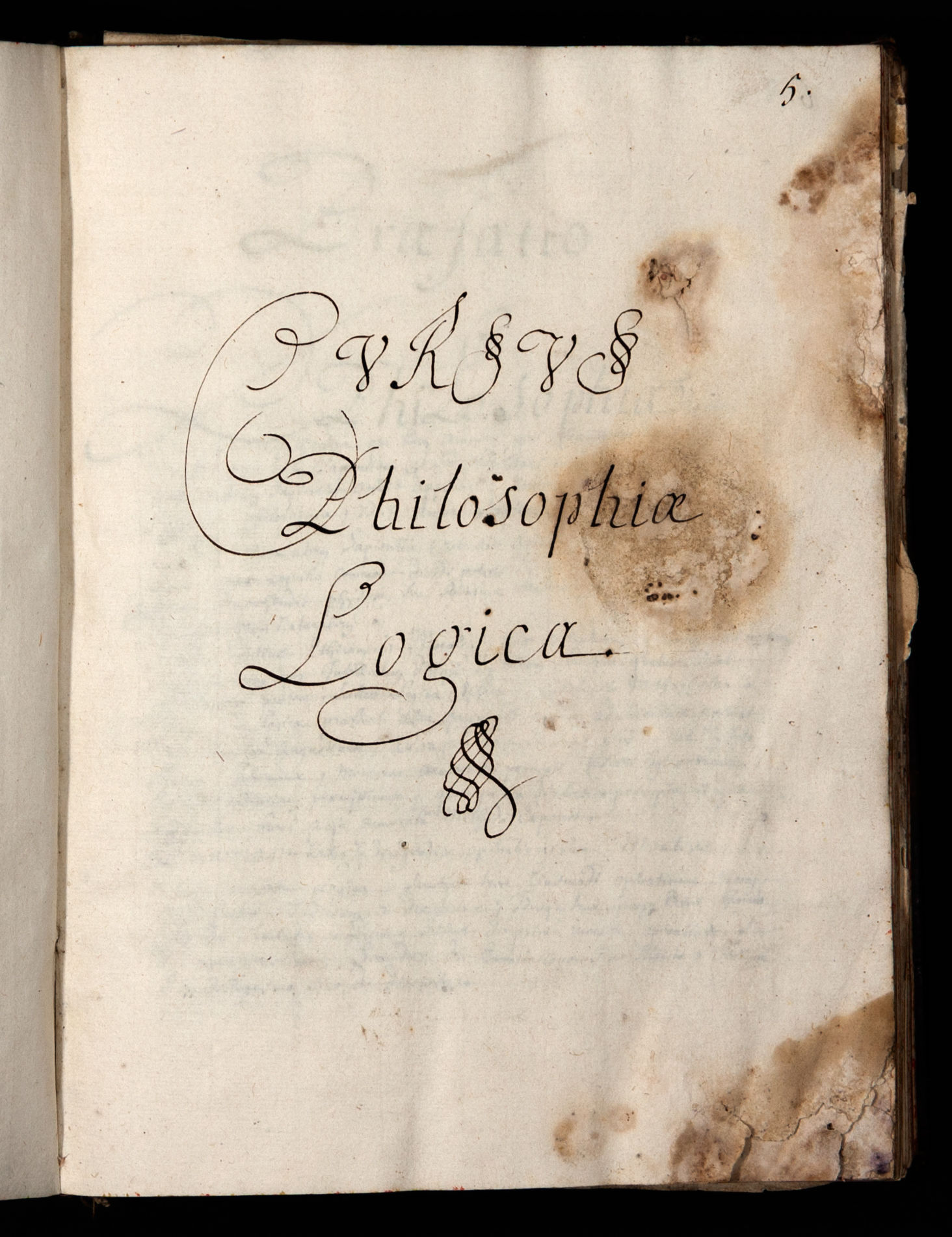 Pitts recently acquired a magnificent unpublished 17th-century manuscript of formal student notes – likely from the University of Paris – relating to a curriculum of lectures on Logic, Ethics, and Moral Philosophy from an Aristotelian perspective. Such hand records, literally the notes of a student sitting in class, from this period are incredibly rare, providing a first-hand account of what education looked like at the time. This volume is particularly interesting because the manuscript is interleaved with engraved philosophical charts and diagrams. These engravings likely functioned as a sort of course guide to supplement a lecture, enabling students to write their own notes and avoid the difficult work of reproducing detailed images by hand. The 6 full-page engravings are signed by the French printmaker Gérard Jollain (d. 1683, active from 1660). This points toward a date of production for the manuscript of around 1670, which is in concert with the Aristotelian nature of the content of the notes. Toward the end of the 17th century, the University of Paris went through a curriculum shift, whereby classes started promoting the philosophy of Descartes (1596-1650) over Aristotle (384 BCE-322 BCE).
Pitts recently acquired a magnificent unpublished 17th-century manuscript of formal student notes – likely from the University of Paris – relating to a curriculum of lectures on Logic, Ethics, and Moral Philosophy from an Aristotelian perspective. Such hand records, literally the notes of a student sitting in class, from this period are incredibly rare, providing a first-hand account of what education looked like at the time. This volume is particularly interesting because the manuscript is interleaved with engraved philosophical charts and diagrams. These engravings likely functioned as a sort of course guide to supplement a lecture, enabling students to write their own notes and avoid the difficult work of reproducing detailed images by hand. The 6 full-page engravings are signed by the French printmaker Gérard Jollain (d. 1683, active from 1660). This points toward a date of production for the manuscript of around 1670, which is in concert with the Aristotelian nature of the content of the notes. Toward the end of the 17th century, the University of Paris went through a curriculum shift, whereby classes started promoting the philosophy of Descartes (1596-1650) over Aristotle (384 BCE-322 BCE).
This item fits well within Pitts’ collection of dissertations and student output from European universities of the 17th and 18th centuries, a growing collection that helps researchers understand how theological education has evolved over the centuries. The volume demonstrates the breadth of fields that students were called upon to study in the past, a reminder present also in Dr. Snarey’s work. Pitts is excited to add it in Dr. Snarey’s honor, who has helped generations of students understand the most effective ways of educating.
Notes
Katie Givens Kime and John R. Snarey, “A Jamesian Response to Reductionism in the Neuropsychology of Religious Experience” (Archive for the Psychology of Religion 40 [2018]), 318.

Noel Leo Erskine
Professor of Theology and Ethics
Acquisition: The Jamaican New Testament, Bible Society of the West Indies, 2012.
Honorary Naming: The Archives of the African Orthodox Church (AOC)
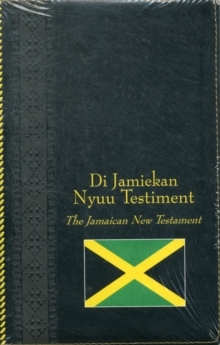 In 2012, the Bible Society of the West Indies published the first New Testament in the Patois language spoken in Jamaica, on the occasion of the 50th anniversary of Jamaican independence. Dr. Erskine wrote an article about this publication in the 2013 issue of the International Journal of Public Theology. Dr. Erskine writes, “For the first time Jamaicans heard the Word of God as presented in the New Testament read in their own language. Jamaicans are accustomed to hearing the Bible read in the English language, a language which is not rooted in Jamaican cultural soil and for which many Jamaicans have no real feeling. In Jamaica we have always experienced the English language as the language of the ‘head,’ of educational institutions; whereas we experience Patwa as the language of the heart, the language spoken at home and the language with which the masses of Jamaicans were raised.”2 He continues, “The Jamaican New Testament re-enacted for us, as a nation and people, the divine miracle and humility of the incarnation: that God would speak to us, the people of Jamaica, in our own language in a similar manner as when God came among us in Jesus Christ. . . .The translation of the New Testament into Patwa makes the mystery of God palpable among us: transcendence is hidden in immanence, God is Emmanuel.”3 With all of this inspiring talk about this translation, it was a horror and embarrassment to search the Emory catalog and find exactly zero holdings of this Jamaican New Testament. What is even more horrific is that a WorldCat search reveals that there are exactly 8 holdings of this New Testament in American libraries. Thanks to Pitts’ Head of Acquisitions and Access Services, though, we are proud to say that this library will no longer be without this important publication, now acquired to honor Dr. Erskine.
In 2012, the Bible Society of the West Indies published the first New Testament in the Patois language spoken in Jamaica, on the occasion of the 50th anniversary of Jamaican independence. Dr. Erskine wrote an article about this publication in the 2013 issue of the International Journal of Public Theology. Dr. Erskine writes, “For the first time Jamaicans heard the Word of God as presented in the New Testament read in their own language. Jamaicans are accustomed to hearing the Bible read in the English language, a language which is not rooted in Jamaican cultural soil and for which many Jamaicans have no real feeling. In Jamaica we have always experienced the English language as the language of the ‘head,’ of educational institutions; whereas we experience Patwa as the language of the heart, the language spoken at home and the language with which the masses of Jamaicans were raised.”2 He continues, “The Jamaican New Testament re-enacted for us, as a nation and people, the divine miracle and humility of the incarnation: that God would speak to us, the people of Jamaica, in our own language in a similar manner as when God came among us in Jesus Christ. . . .The translation of the New Testament into Patwa makes the mystery of God palpable among us: transcendence is hidden in immanence, God is Emmanuel.”3 With all of this inspiring talk about this translation, it was a horror and embarrassment to search the Emory catalog and find exactly zero holdings of this Jamaican New Testament. What is even more horrific is that a WorldCat search reveals that there are exactly 8 holdings of this New Testament in American libraries. Thanks to Pitts’ Head of Acquisitions and Access Services, though, we are proud to say that this library will no longer be without this important publication, now acquired to honor Dr. Erskine.
But to celebrate Dr. Erskine’s incredible career of teaching and scholarship, Pitts could not stop with this one acquisition. Even though the Jamaican New Testament is rare, it is not going to be in the Pitts Special Collections, and the library names Special Collections in honor of retiring faculty. So the library is naming one of its most significant holdings related to Dr. Erskine’s field of work, Caribbean theology, in his honor.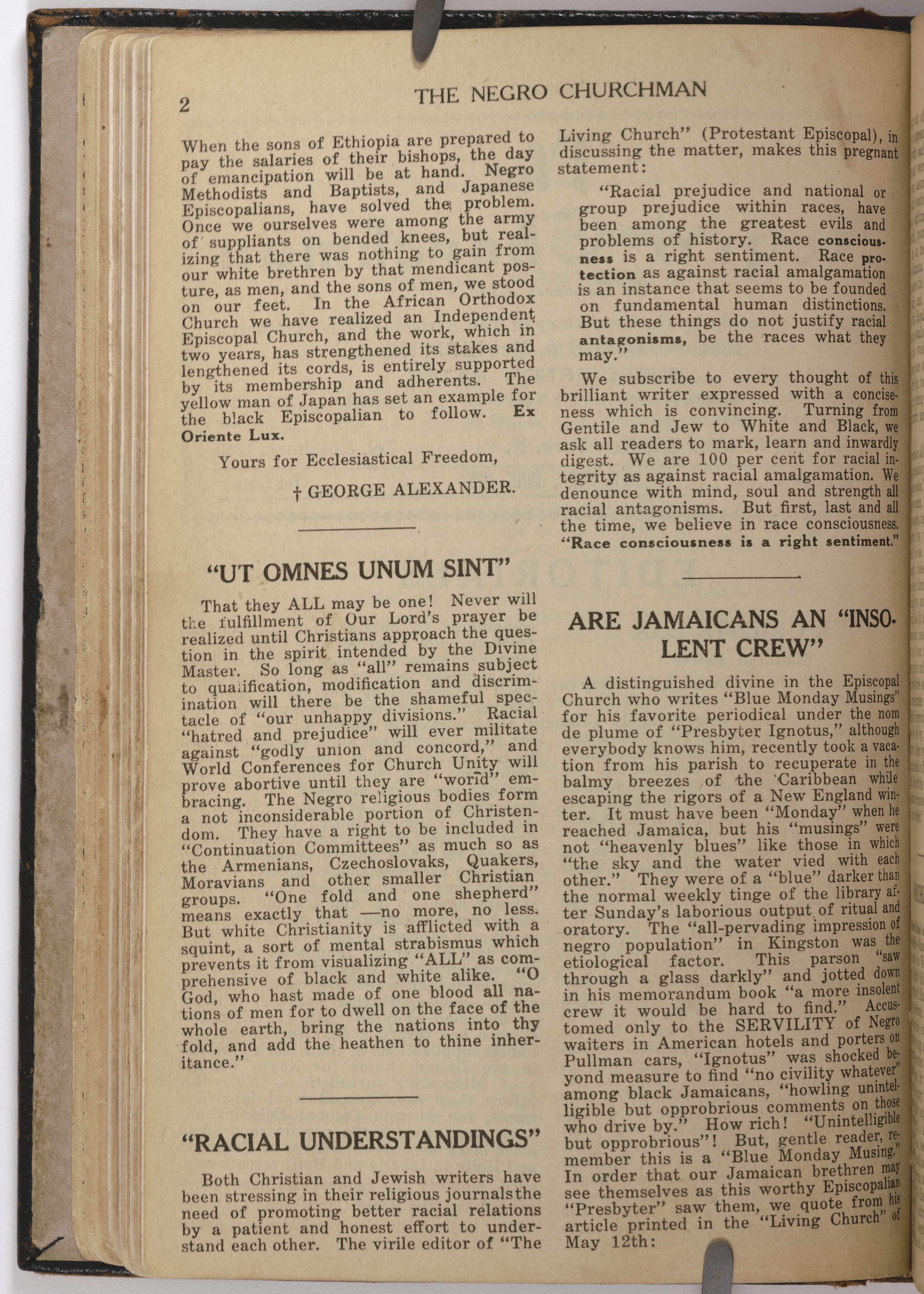
Since the 1980s, Pitts has held the archives of the African Orthodox Church (AOC), a South African church founded in 1924. Among the many things that are interesting about this collection and this movement in South Africa is its connection to Caribbean Christianity. The AOC in South Africa modeled itself after the African Orthodox Church founded in 1921 in the United States, a religious movement that had been formed by George Alexander McGuire (1866-1934), who as Dr. Erskine describes in his book From Garvey to Marley, had founded the denomination in the West Indies and was then hired as a chaplain by Marcus Garvey for the UNIA.4 The Negro Churchman was the official publication of the AOC, headed up by McGuire, and it was this periodical, which traveled across the Atlantic, that become the primary way that Daniel William Alexander (1883-1970) in South Africa learned about the movement and modeled his new church after. Pitts’ collection includes bound volumes of the Negro Churchman, owned and annotated by Alexander. These volumes, which are in many ways the key to the founding of this church and its connection to the West Indies and the US, are now being named in honor of Dr. Erskine, celebrating his vision to spread diverse theologies and ecclesial practices through his teaching and writing.
Notes
Noel Leo Erskine, “Die Jamiekan Nyuu Testiment” (International Journal of Public Theology 7 [2013]), 390. Erskine, “Die Jamiekan Nyuu Testiment,” 391. See Noel Leo Erskine, From Garvey to Marley: Rastafari Theology (Gainesville, FL: University Press of Florida, 2005).
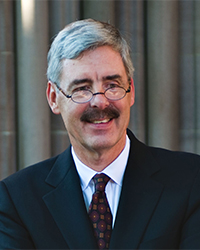
Lang Lowrey, III
Professor in the Practice of Church Leadership
Director of the Episcopal and Anglican Studies Program
Acquisition: The book of common prayer (Cambridge: John Baskerville, 1760).
To celebrate the retirement of Lang Lowrey, Pitts has acquired a truly remarkable copy of the Book of Common Prayer, acknowledging Professor Lowrey’s leadership of the Episcopal and Anglican Studies Program. Pitts recently founded its J. Michael Morgan English Bible and Psalmody Collection. One lesser-known part of that collection is its extensive holdings of Books of Common Prayer, including a first edition of the 1549 book of common prayer edited by Thomas Cranmer and first edition of the major revision of the prayer book in 1662. One item missing from the Morgan Collection is a Baskerville book of Common Prayer, and Professor Lowrey’s retirement presented the perfect opportunity to acquire one.
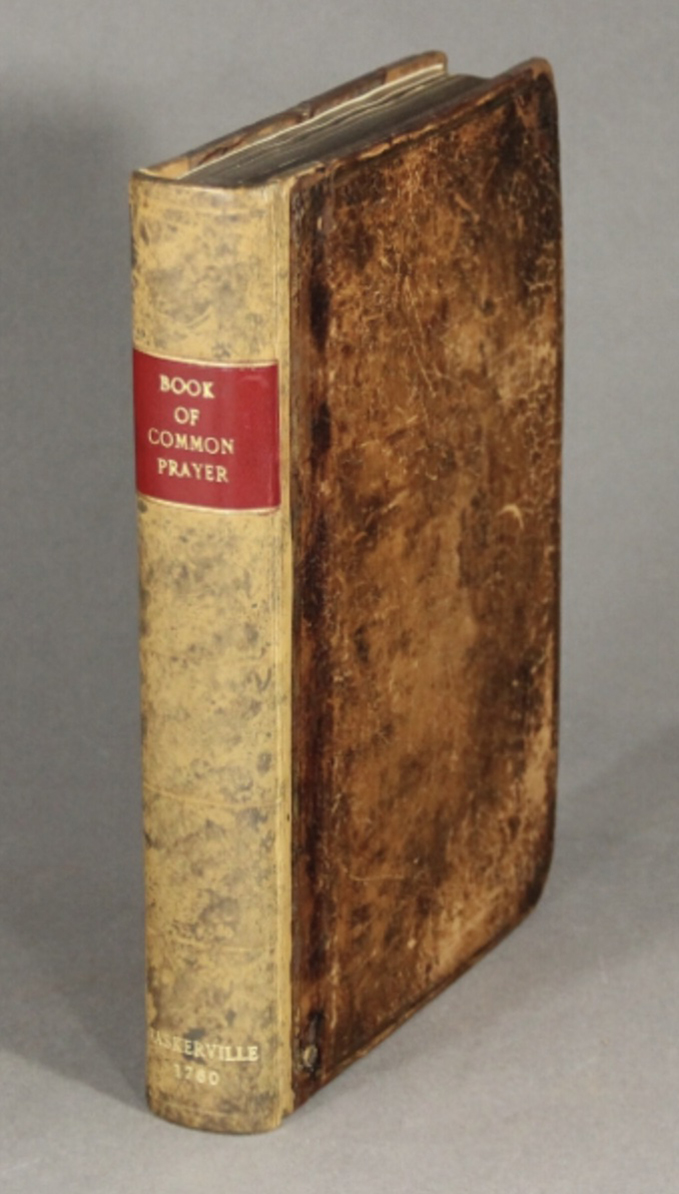
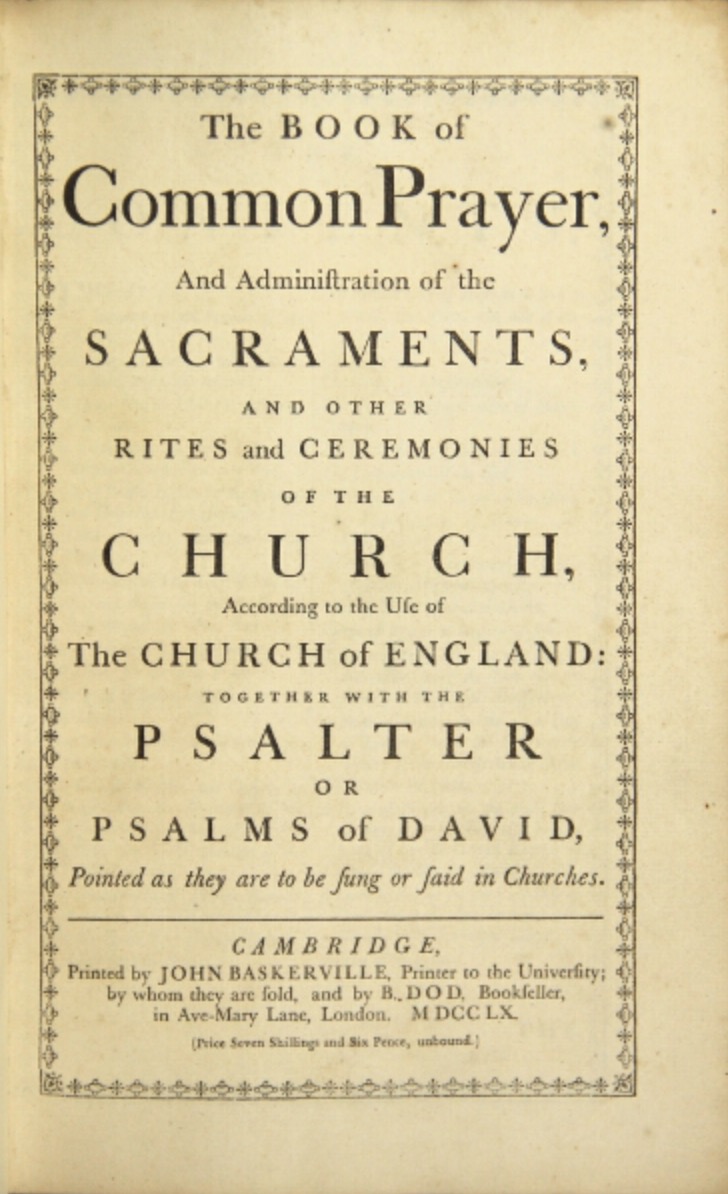 John Baskerville (1707-1775), a significant figure in English printing in the mid 18th century, was, like Professor Lowrey, a savvy businessman and titan of industry who turned toward academic, humanistic, and ecclesial pursuits later in life. Baskerville was originally a writing teacher and gravestone letter cutter in early 18th century England. As a young man, he started a business in “japanning,” a common technique at the time of applying varnish to common items to make them appear in a Japanese style, capitalizing on the proclivities of the upper class in Georgian England. Having made a sizable fortune in this world, Baskerville then turned to type making and printing, eventually revolutionizing the sizable print output of England. He developed new, sharper typefaces, which he combined with a new, shiny deep black ink on a new style of glossy paper, creating books that looked fresher and different than anything previously on the market. In 1758, Baskerville was hired as the official printer of the University of Cambridge, and in 1760 he produced several editions of the Book of Common Prayer for the Church of England. In 1763, he produced his masterpiece, the Baskerville Authorized version of the Bible, considered by many typographically to be the most beautiful Bible ever produced. A first edition of this Baskerville Authorized Version is held in the Morgan Collection.
John Baskerville (1707-1775), a significant figure in English printing in the mid 18th century, was, like Professor Lowrey, a savvy businessman and titan of industry who turned toward academic, humanistic, and ecclesial pursuits later in life. Baskerville was originally a writing teacher and gravestone letter cutter in early 18th century England. As a young man, he started a business in “japanning,” a common technique at the time of applying varnish to common items to make them appear in a Japanese style, capitalizing on the proclivities of the upper class in Georgian England. Having made a sizable fortune in this world, Baskerville then turned to type making and printing, eventually revolutionizing the sizable print output of England. He developed new, sharper typefaces, which he combined with a new, shiny deep black ink on a new style of glossy paper, creating books that looked fresher and different than anything previously on the market. In 1758, Baskerville was hired as the official printer of the University of Cambridge, and in 1760 he produced several editions of the Book of Common Prayer for the Church of England. In 1763, he produced his masterpiece, the Baskerville Authorized version of the Bible, considered by many typographically to be the most beautiful Bible ever produced. A first edition of this Baskerville Authorized Version is held in the Morgan Collection.
In Professor Lowrey’s honor, Pitts now joins with that Baskerville Bible a 1760 printing of the Book of Common Prayer, produced by Baskerville three years earlier. The Pitts copy is bound in contemporary calfskin, with a red Morocco label on a gilt-paneled spine. It becomes the earliest Baskerville imprint owned by Emory, an important addition to the collection that not only shows how this central Anglican prayer book changed over the centuries, but also how entrepreneurial businessmen have enhanced the life and work of the church. Pitts is happy to add it as the first acquisition to our new Morgan Collection, and it is a fitting way to celebrate the contributions of Lang Lowrey, acknowledging his continual work of innovation and renewal.
Retiring Faculty and Acquisitions for 2022
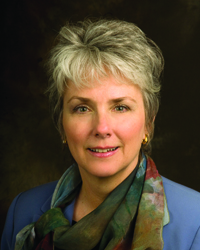
Anne Burkholder
Associate Dean of Methodist Studies
Professor in the Practice of Ecclesiology and Church Leadership
Acquisition: Benjamin T. Sanford, “The late Revd. John Wesley, M.A. and 446 of the Preachers in his Connexion represented as assembled in City Road Chapel, London.” Pendleton's Lithography, Boston, undated (between 1825 and 1836). RG020-3, Box 46, Item 22-008-001
Pitts is excited to honor the retirement of Dr. Anne Burkholder, who has led Candler’s Methodist Studies program so successfully. To mark this occasion and celebrate Dr. Burkholder’s work, Pitts has acquired a remarkable image depicting early Methodist leaders. This rare and quite large nineteenth-century lithograph depicts John Wesley preaching at the City Road Chapel in London, addressing the 446 preachers in his connection. The lithograph was produced in the studio of William S. Pendleton (1795-1879) in Boston. Many of the individuals featured in the print are clearly identifiable by their printed engravings from the late eighteenth and early nineteenth centuries. One can quickly identify the familiar faces of Charles Wesley (1707-1788), John William Fletcher (1729-1785), Joseph Benson (1749-1821), and others.
 Most striking is how homogenous this portrayal of Methodist preachers is. The Methodist leaders are all white and all male. The lithograph reflects how eighteenth-century Methodism was viewed through the lens of the early nineteenth century, when the print was produced, but it is a visual reminder to a modern audience of how the Methodist movement has evolved over the last 200 years, since the scene depicted and since the print was produced. Through countless struggles for inclusion, women, people of color, and others with marginalized backgrounds are now numbered amongst the leadership of the United Methodist Church. Dr. Anne Burkholder, to whom this piece is dedicated, not only promoted inclusion in the UMC, but, through her teaching at Candler over 14 years, she educated Methodist ministers on the struggle for inclusion and its importance that has helped make the church richer and more diverse. This acquisition, therefore, is a fitting tribute to her work, which has in many ways changed the way Methodist leadership looks and works.
Most striking is how homogenous this portrayal of Methodist preachers is. The Methodist leaders are all white and all male. The lithograph reflects how eighteenth-century Methodism was viewed through the lens of the early nineteenth century, when the print was produced, but it is a visual reminder to a modern audience of how the Methodist movement has evolved over the last 200 years, since the scene depicted and since the print was produced. Through countless struggles for inclusion, women, people of color, and others with marginalized backgrounds are now numbered amongst the leadership of the United Methodist Church. Dr. Anne Burkholder, to whom this piece is dedicated, not only promoted inclusion in the UMC, but, through her teaching at Candler over 14 years, she educated Methodist ministers on the struggle for inclusion and its importance that has helped make the church richer and more diverse. This acquisition, therefore, is a fitting tribute to her work, which has in many ways changed the way Methodist leadership looks and works.

Timothy E. Albrecht
Professor of Church Music
University Organist, Emory University
Honorary Naming: Martin Luther, Das Magnificat Vorteutschet und auszgelegt (Wittenberg: Melchior Lotter, 1521). 1521 LUTH L
Dr. Timothy Albrecht has always been a great friend to Pitts Theology Library and the Richard C. Kessler Reformation Collection. Dr. Albrecht was central to many Kessler Reformation Day Concerts, and his insights into the musical theology of Luther and Bach, as well as his own creative and academic contributions to the collection, are a legacy that will resonate for many years to come. To celebrate Dr. Albrecht’s career, Pitts is excited to name one of the significant Kessler first editions in his honor.
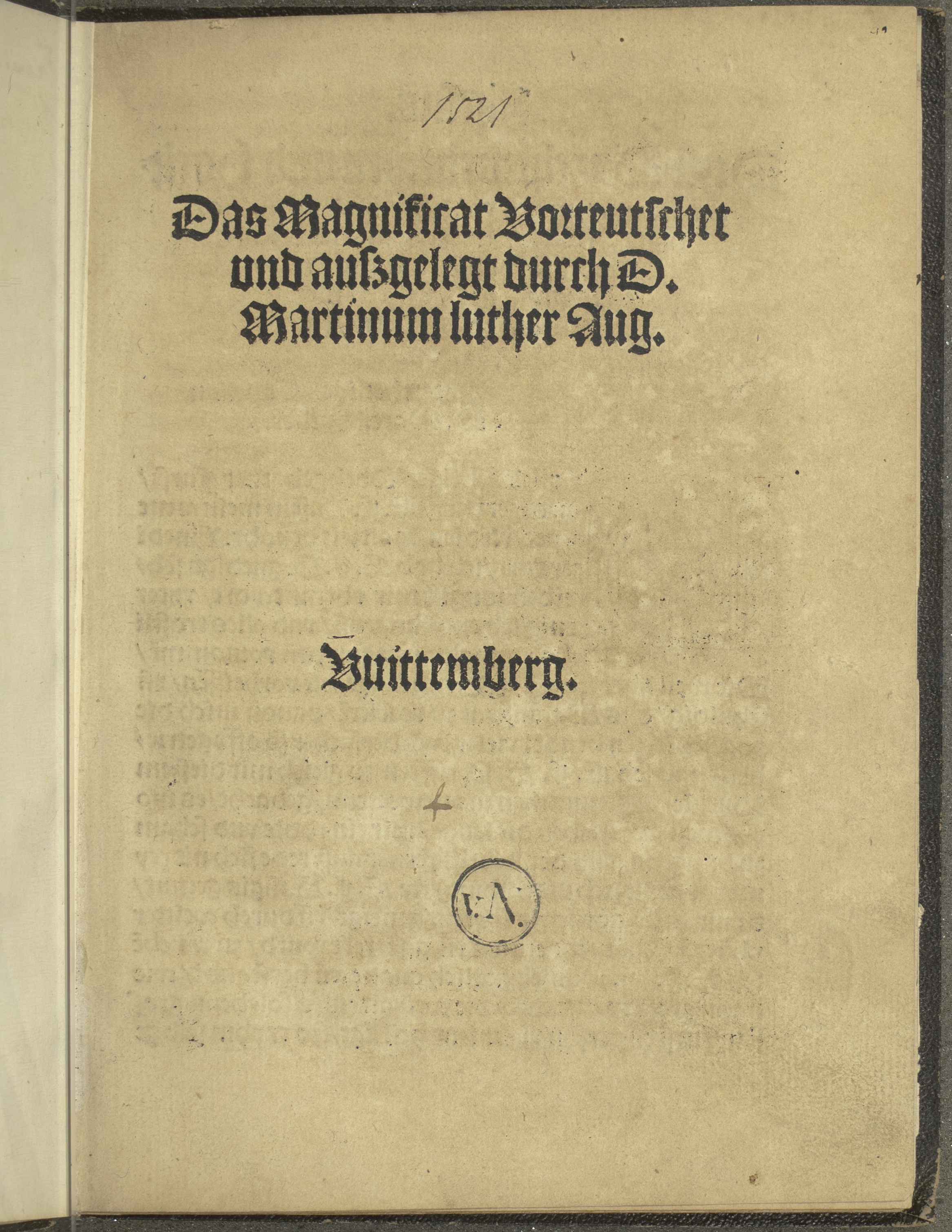 To celebrate the career of Dr. Albrecht, Pitts is naming its first printing of the translation and interpretation of the Magnificat (Luke 1:46-55) by Martin Luther (1483-1546), printed in Wittenberg in 1521, in Dr. Albrecht’s honor (1521 LUTH L). Luther dedicated it to John Frederick of Saxony (1503-1554) as a token of his thanks for his support and encouragement after Luther’s condemnation by Pope Leo X (1475-1521). A little over 200 years later, in 1724, this tract by Luther became the basis for one of the most beautiful cantatas written by Johann Sebastian Bach (1685-1750), “My soul exalts the Lord” (Meine Seel erhebt den Herren) (BMV 10). This Bach work was performed at the annual Kessler Reformation Concert in 1997, celebrating the 10th anniversary of the Kessler Collection and the 500th birthday of Luther’s fellow reformer Philipp Melanchthon (1497-156). The organizer of this concert, who performed Bach and led the audience in singing, “A Mighty Fortress is Our God,” was Dr. Timothy Albrecht.
To celebrate the career of Dr. Albrecht, Pitts is naming its first printing of the translation and interpretation of the Magnificat (Luke 1:46-55) by Martin Luther (1483-1546), printed in Wittenberg in 1521, in Dr. Albrecht’s honor (1521 LUTH L). Luther dedicated it to John Frederick of Saxony (1503-1554) as a token of his thanks for his support and encouragement after Luther’s condemnation by Pope Leo X (1475-1521). A little over 200 years later, in 1724, this tract by Luther became the basis for one of the most beautiful cantatas written by Johann Sebastian Bach (1685-1750), “My soul exalts the Lord” (Meine Seel erhebt den Herren) (BMV 10). This Bach work was performed at the annual Kessler Reformation Concert in 1997, celebrating the 10th anniversary of the Kessler Collection and the 500th birthday of Luther’s fellow reformer Philipp Melanchthon (1497-156). The organizer of this concert, who performed Bach and led the audience in singing, “A Mighty Fortress is Our God,” was Dr. Timothy Albrecht.
Pitts is excited to name this important early Lutheran work in honor of Dr. Albrecht in celebration of his retirement, as a way of thanking him for a remarkable career of scholarship and teaching, as well as ongoing support for the work of the Richard C. Kessler Reformation Collection.
Retiring Faculty and Acquisitions for 2021

David Pacini
Professor of Historical and Philosophical Theology
Acquisition: Augustin Hirschvogel (1503-1553), Concordantz Alt und News Testament (MSS 472)
Pitts Theology Library joins the entire Emory University community in celebrating the career of Dr. David Pacini, who retires this year as Professor of Historical and Philosophical Theology. Not only has Professor Pacini shaped the minds, careers, and lives of countless Emory and Candler students, but he has been among the strongest supporters (and users!) of Pitts, its growing collections, and its instructional mission. As a colleague and friend to longtime Pitts directors Channing Jeschke and Pat Graham, Dr. Pacini has long advocated for the budgets, the staff, and the rare book collections of Pitts, most notably its Richard C. Kessler Reformation Collection. To honor Professor Pacini for his impact on our community and our library, Pitts has made one of the most significant additions to the Kessler Collection in several years. In Professor Pacini's honor, Pitts has acquired a nearly complete set of Augustin Hirschvogel's etchings from the 'Concordantzen alt und news Testament' (Wien Eigidius Adler, 1550).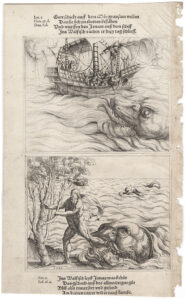
Augustin Hirschvogel (1503-1553) is the most well-known of a prominent German family of artists from Nuremberg. He was trained as a stained-glass painter in the workshop of his father, but when his hometown accepted the Reformation, the workshop lost its commissions to create stained glass for churches. As a result, Hirschvogel diversified his artistic technique. After moving to Vienna in 1544, he designed maps, views of the city, and fortification plans. It is during the last decade of his life that he created the landscape and copper Biblical etchings for which is he most renowned. His illustrations of the Old and New Testament accompany verses composed by Hungarian Peter Perényi (1502–48), and they were published as a single work in 1550. Art historian Jane S. Peters notes, 'Hirschvogel took advantage of the freedom allowed by the etching needle to create wiry lines, knots, and curlicues, a style encouraged by his analogous activity of etching lines through the paint layers of his stained glass.' The Hirschvogel Biblical etchings are quite rare, and the new Pitts collection of 92 etchings, 88 from the original folio edition, is now amongst the largest documented collections of Hirschvogel's works.
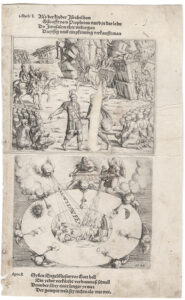 All those who have learned from Dr. Pacini, including students in his classrooms, attendees at his public lectures, faculty colleagues, and readers of his scholarship, will acknowledge that visual art has been central to his teaching and research. Following his mentors of the past, giants like Kant, Lessing, and Wittgenstein, Dr. Pacini has used the aesthetic to bring meaning to challenging theological concepts. The opportunity to add this significant collection of images interpreting Scripture to the Richard C. Kessler Collection, which Dr. Pacini has so strongly supported, seems an appropriate way to mark the storied career of this supreme teacher. It is our hope that this collection of beautiful images will serve as a fitting tribute to the man, his teaching, and his impeccable taste, and it will continue Dr. Pacini's legacy of helping students expand their understanding of the Biblical text and theological tradition.
All those who have learned from Dr. Pacini, including students in his classrooms, attendees at his public lectures, faculty colleagues, and readers of his scholarship, will acknowledge that visual art has been central to his teaching and research. Following his mentors of the past, giants like Kant, Lessing, and Wittgenstein, Dr. Pacini has used the aesthetic to bring meaning to challenging theological concepts. The opportunity to add this significant collection of images interpreting Scripture to the Richard C. Kessler Collection, which Dr. Pacini has so strongly supported, seems an appropriate way to mark the storied career of this supreme teacher. It is our hope that this collection of beautiful images will serve as a fitting tribute to the man, his teaching, and his impeccable taste, and it will continue Dr. Pacini's legacy of helping students expand their understanding of the Biblical text and theological tradition.
On behalf of all the staff at Pitts Theology Library, past and present, thank you for your support, Dr. Pacini, and congratulations.

Philip Reynolds
Charles Howard Candler Professor of Medieval Christianity; Aquinas Professor of Historical Theology
Acquisition: Peter Lombard, Liber sententiae magistri Petri Lom (1487 PETE)
Pitts Theology Library offers congratulations and thanks to Professor Philip Reynolds, who retires this Spring as the Charles Howard Candler Professor of Medieval Christianity and the Aquinas Professor of Historical Theology. In honor of Professor Reynolds' remarkable career at Candler and Emory and his steadfast support for Pitts' instructional mission, the library has acquired a landmark work in medieval theology. Recently Pitts acquired and named in Professor Reynolds' honor a 1487 printing of the four books of Peter Lombard's Sentences. Lombard's work has been central to Dr. Reynolds' teaching and writing career, notably in his acclaimed magnum opus How Marriage Became One of the Sacraments (Cambridge, 2016), a book for which he awarded the 2109 Haskins Medal by the Medieval Academy of America.
 Peter Lombard (ca. 1100-1160) was a scholastic theologian and Bishop of Paris. His masterpiece, the Sententiarum libri quatuor, likely written in the latter half of the 1150s, became the standard textbook of late medieval theology. As Professor Reynolds writes, 'His Sentences established the agenda for theological studies until the sixteenth century.' The fourth book of this work focuses on the Sacraments and the Four Last Things, including his treatises on marriage. Reynolds writes, 'the Lombard harvested and compiled the results of an extraordinary vibrant and creative period in sacramental theology, collecting and sorting his material on marriage in his usual manner, which was pedestrian but practical, serviceable, and astute: a marvelous tabulation of current thought.' The Pitts acquisition is an edition printed by Nicolaus Kesler in Basel in 1487. This was the first printing of Lombard's Sentences to include the Conclusiones Super IV Libros Sententiarum by Henry of Gorkum (1378-1431), a Dutch Thomist and professor the University of Köln. The Conclusiones are a set of commentaries on Lombard's work, organized as a series of short summaries of Lombard. Henry's work was popular in the 15th and 16th centuries, and it was printed both as a standalone work and (as is the case here) as a companion to Lombard's Sentences.
Peter Lombard (ca. 1100-1160) was a scholastic theologian and Bishop of Paris. His masterpiece, the Sententiarum libri quatuor, likely written in the latter half of the 1150s, became the standard textbook of late medieval theology. As Professor Reynolds writes, 'His Sentences established the agenda for theological studies until the sixteenth century.' The fourth book of this work focuses on the Sacraments and the Four Last Things, including his treatises on marriage. Reynolds writes, 'the Lombard harvested and compiled the results of an extraordinary vibrant and creative period in sacramental theology, collecting and sorting his material on marriage in his usual manner, which was pedestrian but practical, serviceable, and astute: a marvelous tabulation of current thought.' The Pitts acquisition is an edition printed by Nicolaus Kesler in Basel in 1487. This was the first printing of Lombard's Sentences to include the Conclusiones Super IV Libros Sententiarum by Henry of Gorkum (1378-1431), a Dutch Thomist and professor the University of Köln. The Conclusiones are a set of commentaries on Lombard's work, organized as a series of short summaries of Lombard. Henry's work was popular in the 15th and 16th centuries, and it was printed both as a standalone work and (as is the case here) as a companion to Lombard's Sentences.
Reynolds describes the organization of the work as follows:
"The volume begins with the Lombard's prologue followed by Henry's conclusio to this, which serves as a preliminary overview of the Sentences as a whole. Then, each of the four Books begins with a list of distinctions and topical 'rubrics,' which correspond to the headings of the subsections of each distinction in the main text. The distinction numbers are underlined in red in this list. Then follow the distinctions, each divided into subsections, with rubrics. Each distinction is followed immediately by Henry's conclusio (analytical summary) to that distinction. Each conclusio begins (rather redundantly!) by identifying the distinction. Henry's conclusiones are distinguished from the main text (Peter Lombard's) by their smaller font."
He concludes, "It would be hard to improve on the sheer clarity, transparency, and utility of this edition."
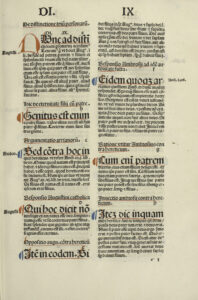 The folio volume is printed in Gothic type in double columns, and there are red and blue initial letters to mark the opening of sections, including a beautiful 8-line blue initial with red penwork, and continuous rubrication throughout the work. The volume is bound in contemporary Westphalian blind-tooled brown pigskin over wooden boards. Pitts is excited to add this volume to its incunabula collection, a term used to refer to books printed in Europe before the year 1501, the 'infancy' period of moveable type printing in Europe. These rare works are the focus of ongoing research and exhibitions at Pitts, and this acquisition takes the total number of incunables at Pitts over 110. We hope that this new acquisition, which will bear Prof. Reynolds' name in its catalog record, is a worthy recognition of a remarkable career, and we look forward to supporting new generations of students as they learn from two masters, Lombard and Reynolds.
The folio volume is printed in Gothic type in double columns, and there are red and blue initial letters to mark the opening of sections, including a beautiful 8-line blue initial with red penwork, and continuous rubrication throughout the work. The volume is bound in contemporary Westphalian blind-tooled brown pigskin over wooden boards. Pitts is excited to add this volume to its incunabula collection, a term used to refer to books printed in Europe before the year 1501, the 'infancy' period of moveable type printing in Europe. These rare works are the focus of ongoing research and exhibitions at Pitts, and this acquisition takes the total number of incunables at Pitts over 110. We hope that this new acquisition, which will bear Prof. Reynolds' name in its catalog record, is a worthy recognition of a remarkable career, and we look forward to supporting new generations of students as they learn from two masters, Lombard and Reynolds.
Retiring Faculty and Acquisitions for 2020

Steven J. Kraftchick
Professor in the Practice of New Testament Interpretation; Director of General and Advanced Studies
Acquisition: Raymond of Sabunde (d. 1436), Theologia naturalis, sive, Liber creaturarum (1496 RAYM)
Pitts Theology Library joins Candler School of Theology and Emory University in celebrating the remarkable career of Professor Steven J. Kraftchick, Professor in the Practice of New Testament Interpretation and Director of General and Advanced Studies. To honor Professor Kraftchick, his prolific career, and his lasting impact on the school, the university, and the library, Pitts has acquired an important work on natural theology, written by a polymath whose diverse career, broad interests, and innovative theological thinking are perhaps exceeded only by the inimitable Steve Kraftchick.
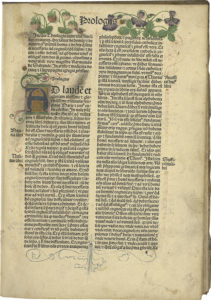 Raymond of Sabunde (d. 1436) was a Catalonian theologian and scientist. He was master of arts, doctor of medicine, and professor of theology at the University of Toulouse. He owes his renown to a work completed in 1436: Theologia naturalis. The first printed edition of the book, which found many imitators, is undated, but it was likely printed in 1484. This work is thought by some to be the first appearance of the phrase "natural theology,"; and it is certainly an expression of ideas about humanity's understanding of the divine that was decades, if not centuries, ahead of its time. In the work, Raymond declares that the book of nature and the Bible are both Divine revelations, both accessible to humankind. According to the Catholic Encyclopedia, 'What is new and epoch-making is not the material but the method; not of circumscribing religion within the limits of reason, but, by logical collation, of elevating the same upon the basis of natural truth to a science accessible and convincing to all. [Raymond] recognizes two sources of knowledge, the book of nature and the Bible. The first is universal and direct, the other serves partly to instruct man the better to understand nature, and partly to reveal new truths, not accessible to the natural understanding, but once revealed by God made apprehensible by natural reason. As to subject matter the two cover the same ground. The book of nature, the contents of which are manifested through sense experience and self-consciousness, can no more be falsified than the Bible and may serve as an exhaustive source of knowledge; but through the fall of man it was rendered obscure, so that it became incapable of guiding to the real wisdom of salvation. However, the Bible as well as illumination from above, not in conflict with nature, enables one to reach the correct explanation and application of natural things and self. Hence, his book of nature as a human supplement to the divine Word is to be the basic knowledge of man, because it subtends the doctrines of Scripture with the immovable foundations of self-knowledge, and therefore plants the revealed truths upon the rational ground of universal human perception, internal and external.'
Raymond of Sabunde (d. 1436) was a Catalonian theologian and scientist. He was master of arts, doctor of medicine, and professor of theology at the University of Toulouse. He owes his renown to a work completed in 1436: Theologia naturalis. The first printed edition of the book, which found many imitators, is undated, but it was likely printed in 1484. This work is thought by some to be the first appearance of the phrase "natural theology,"; and it is certainly an expression of ideas about humanity's understanding of the divine that was decades, if not centuries, ahead of its time. In the work, Raymond declares that the book of nature and the Bible are both Divine revelations, both accessible to humankind. According to the Catholic Encyclopedia, 'What is new and epoch-making is not the material but the method; not of circumscribing religion within the limits of reason, but, by logical collation, of elevating the same upon the basis of natural truth to a science accessible and convincing to all. [Raymond] recognizes two sources of knowledge, the book of nature and the Bible. The first is universal and direct, the other serves partly to instruct man the better to understand nature, and partly to reveal new truths, not accessible to the natural understanding, but once revealed by God made apprehensible by natural reason. As to subject matter the two cover the same ground. The book of nature, the contents of which are manifested through sense experience and self-consciousness, can no more be falsified than the Bible and may serve as an exhaustive source of knowledge; but through the fall of man it was rendered obscure, so that it became incapable of guiding to the real wisdom of salvation. However, the Bible as well as illumination from above, not in conflict with nature, enables one to reach the correct explanation and application of natural things and self. Hence, his book of nature as a human supplement to the divine Word is to be the basic knowledge of man, because it subtends the doctrines of Scripture with the immovable foundations of self-knowledge, and therefore plants the revealed truths upon the rational ground of universal human perception, internal and external.'
In 1559, the controversial method landed the work on the church's Index, then in 1564 and 1583 the Index only forbid producing and reading the works' prologue. French philosopher Michel de Montaigne (1533-1592) translated the work into French, and it served as the subject of his famous Apologie de Raymond Sebond, the longest of his well-known Essais. Montaigne identifies "the conceits of the author to be excellent, the con texture of his work well followed, and his project full of pietie .... His drift is bold, and his scope adventurous, for he undertaketh by humane and naturall reasons, to establish and verine all the articles of Christian religion against Atheists."
The Pitts copy, the first dated version, printed in Strasburg in 1496, is bound in contemporary deerskin over wooden boards. The covers are paneled and blind tooled with a small rosette tool. There are remains of paper labels on the book's spine. The book has many contemporary manuscript notes, including a two-line note on f. b2recto, and on f. a2verso is a marginal drawing of the scala naturae, the great chain of being that divides all beings into the divine, angelic beings, humanity, and other created elements. The book includes the inscription of Johannes Pengl (Penngl) from Weißenburg in Bavaria, who was active in Eichstütt and Vienna, with a note indicating the cost of binding on the final paste down. There are later notes and a shelf-mark on the front paste-down and loose sheet. The second leaf (π2) has a beautiful green painted initial A [Amor] on a gold ground with pink and blue edges, extending into the margins with green-stemmed pink and gold flowers on the opposite side. The first leaf of the text proper (a1) has a large blue painted initial A on a gold ground with pink and green edges and large pink and purple flowers. Strawberries, thistles, and a Tromp l'oeil of a dead fly fill the upper margin. The work is rubricated throughout.
This beautiful work, now part of Pitts Theology Library's collection of incunables (books printed in Europe before 1501), will forever live in the Pitts vault, except when it is brought out for exhibitions, teaching, and research. We thank Prof. Kraftchick for his many contributions, and we are excited to add this important work in his honor.

Karen D. Scheib
Professor of Pastoral Care and Pastoral Theology
Acquisition: Anonymous, Stella Clericorum (1500 STEL)
Pitts Theology Library joins the rest of Emory University in celebrating the career and contributions of Professor Karen D. Scheib, Professor of Pastoral Care and Pastoral Theology, who retires this semester. In honor of Prof. Scheib, Pitts recently acquired from an Austrian book dealer a rare manual of pastoral care from the 15th century.
The Stella Clericorum, a medieval manual for pastoral care in the Catholic Church, was written by an anonymous author in the early 13th century, in the wake of the Gregorian reforms, which placed greater responsibilities on the clergy. The work emphasizes the moral obligations of priests and the need for responsible leadership, calling on clergy to exercise generosity, mercy, and tolerance. The work remained popular throughout the centuries leading up the Protestant Reformation, and there were over 50 printed editions in the fifteenth century alone. Professor Eric H. Reiter notes, "The text presents its readers with a simple yet thoughtfully organized overview of the nature and dignity of the priesthood specifically and the clergy generally. . . . Unlike the pastoral manuals that proliferated at the same time and sought to provide clerics with specific practical instruction in how to perform their office, the Stella clericorum aims at instilling in its readers the general moral background necessary for celebrating the Mass, preaching God's word, and caring for the souls of the laity."
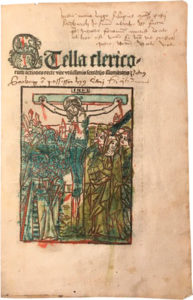 The Pitts copy, printed in 1500 in Cologne, includes an attractive title page woodcut of Christ on the cross, illuminated by an early illustrator. The work includes manuscript annotations throughout, inscribed by an early owner. These annotations illuminate the actual use of this work in moments of pastoral care. According to Kessler Reformation Collection Research Fellow Ulrich Bubenheimer, an expert on 16th century handwriting, all of the annotations are from the same hand. Dr. Bubenheimer notes, "The first sentence of the longer note [on the title page] takes up elements of a prayer for a dying person. This sentence is an expression of Marian devotion. [This is] an interesting note in which pre-Reformation piety is vividly presented." Bubenheimer transcribes and translates the title page note as follows:
The Pitts copy, printed in 1500 in Cologne, includes an attractive title page woodcut of Christ on the cross, illuminated by an early illustrator. The work includes manuscript annotations throughout, inscribed by an early owner. These annotations illuminate the actual use of this work in moments of pastoral care. According to Kessler Reformation Collection Research Fellow Ulrich Bubenheimer, an expert on 16th century handwriting, all of the annotations are from the same hand. Dr. Bubenheimer notes, "The first sentence of the longer note [on the title page] takes up elements of a prayer for a dying person. This sentence is an expression of Marian devotion. [This is] an interesting note in which pre-Reformation piety is vividly presented." Bubenheimer transcribes and translates the title page note as follows:
hodie maria virgo suscipiet animam petri | sarburch in sinum abrahe vt facta | possint intrare foramen muris Vale | et hoc est verum si non vis credere | quere iterum Vale vale
"Today the Virgin Mary will receive the soul of Peter Sarburch into the bosom of Abraham so that the deeds can enter a mouse hole. Farewell! And this is true - if you don't want to believe it, ask again. Farewell, farewell!"
Professor Scheib's writing and teaching on pastoral care has shaped generations of church leaders, and Pitts is proud to acquire this work, which shows that she continues a long tradition of Christian leaders compassionately caring for vulnerable populations at their greatest time of need. The work is now part of Pitts Theology Library's Incunable collection, which now includes over 110 works printed in Europe before 1501. The book will live in the Pitts vault, but will be frequently used for teaching, exhibitions and research. Congratulations, Professor Scheib!
Retiring Faculty and Acquisitions for 2019

Carl R. Holladay
Charles Howard Candler Professor Emeritus of New Testament
Acquisition: Biblia Latina cum postillis Nicolai de Lyra, volume 5 (1482 BIBL V.5)

Carol A. Newsom
Charles Howard Candler Professor Emerita of Old Testament
Acquisition: Biblia Latina cum postillis Nicolai de Lyra, volume 2 (1482 BIBL V.2)
Retiring Faculty and Acquisitions for 2018

Rex D. Matthews
Professor Emeritus in the Practice of Historical Theology and Wesleyan Studies
Acquisition: Two Charles Wesley manuscripts (MSS 159)
